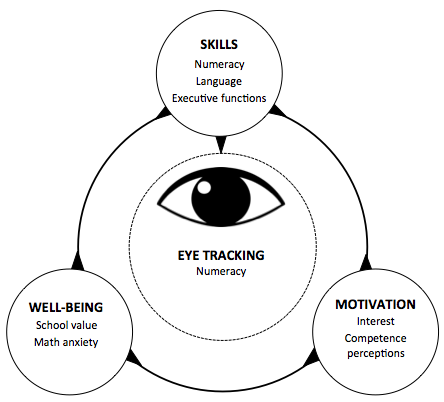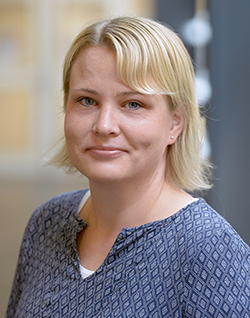About the project
This research project "iSeeNumbers" focuses on tracing individual differences in children’s numeracy development from Grade 1 to Grade 3. The aim is to better understand the mechanisms behind the numeracy development by focusing on the developmental interplay between
- skills (numeracy, language and executive functions),
- motivation (interest and competence perceptions) and
- well-being (school value and math anxiety).

Aims
Primary
- To provide knowledge about the individual differences in numeracy development, and its interplay with other skills (language, executive functions), motivation (interest, competence perceptions), and well-being (school value, math anxiety), as to better understand the mechanisms behind the numeracy development.
Secondary
- To identify groups of children with different profiles regarding their skills, motivation, and wellbeing in Grade 1, and to show the stability of and changes in group memberships over time until Grade 3
- To identify different developmental trajectories in numeracy from Grade 1 to Grade 3
- To identify early markers that best predict numeracy developmental trajectories
- To reveal processes and strategies that children with different levels of numeracy skills make, by analysing their eye movements
- To acknowledge physiological responses (heart rate and skin conduction) while executing numeracy tasks, and their relation to math anxiety
Outcomes
It is assumed that
- distinct subgroups of children with different profiles regarding their skills, motivation and well-being can be identified in the first grade
- stability of and changes in group memberships over time until Grade 3 are found
- early markers that can best predict the development and further protect for unfavourable numeracy development are found
- eye tracking reveals processes and strategies used in numeracy tasks
- relation of math anxiety and physiological responses are found
As an implication for education, the findings can form the basis for development of interventions (e.g., educational games) relevant for children’s numeracy development, especially concerning those children at risk for unfavourable numeracy developmental path.
Background
As the beginning of formal schooling is a transition point in children’s numeracy developmental path, and a time in which foundational building blocks for later development are formed, this research follows the development of children from Grade 1 to Grade 3 (N = 300). This research aims to get a more extensive picture, focusing on the interplay between several factors, namely skills, motivation and well-being, in the beginning of schooling. This perspective holds promise to further our understanding of the mechanisms behind the numeracy development. Advanced technological and methodological approaches will be utilised. Children’s numeracy development is investigated in depth using eye tracking technology in certain numeracy tasks, physiological responses (heart rate and skin conductance) are measured during numeracy tasks in relation to math anxiety. Person-centred methods and latent growth analyses are applied in statistical analyses.
Financing
The Norwegian Research Council, FINNUT (Young Research Talent), 2018-2022
Cooperation
Faculty of Educational Sciences, University of Helsinki, Finland
Faculty of Education and Welfare Studies, Åbo Akademi University, Finland
Department of Psychology, University of Uppsala, Sweden
Department of Psychology, University of York, UK
Scientific advisory board
Annemie Desoete, University of Ghent, Belgium
Elin Reikerås, University of Stavanger, Norway
Nicholas Badcock, Macquarie University, Sydney, Australia


